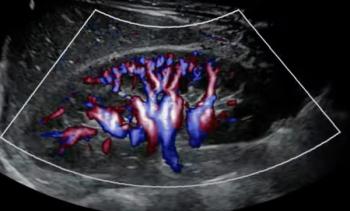
Interactive Virtual Reality Key to Interoperability
Interactive virtual reality can help radiologists, surgeons work better together.
Interoperability was a buzz word on steroids at HIMSS. It was found in big letters within many of the prominent booths all over the show.
Interoperability demands that communications regarding all aspects of patient care be connected, from entry into the system to discharge. This is required to realize the best results for increasing patient outcomes. However, this can't properly happen if departments, such as radiology and surgery, do not effectively talk with each other – something that often occurs due to the lack of a common visualization language.
This was confirmed at HIMSS by discussing this matter with many C- and IT-level individuals. They did confirm, after participating in a demo, that interactive virtual reality (IVR) has the potential to resolve the communication issue.
Why might this be true? For radiology, the "object" views (vs current limitation of using only image views) of IVR will allow radiology to "speak intelligently with surgeons." For surgeons, the “object” views of IVR is, by definition, the representation of the anatomical world of the surgeon. As one surgeon stated, “I've never opened up a patient and seen a 2D view.”
I won't be so bold as to say that IVR is the "key" ingredient to realizing interoperability. However, I will be so bold as to say that the proven, significant gains of both clinical efficacy and workflow (using IVR) are "key" ingredients to increasing patient outcomes. The enhancement of patient engagement due to IVR has been shown to further increase patient outcomes.[[{"type":"media","view_mode":"media_crop","fid":"46856","attributes":{"alt":"Ronald Schilling, PhD","class":"media-image media-image-right","id":"media_crop_6255425767733","media_crop_h":"0","media_crop_image_style":"-1","media_crop_instance":"5467","media_crop_rotate":"0","media_crop_scale_h":"0","media_crop_scale_w":"0","media_crop_w":"0","media_crop_x":"0","media_crop_y":"0","style":"height: 144px; width: 180px; border-width: 0px; border-style: solid; margin: 1px; float: right;","title":"Ronald Schilling, PhD","typeof":"foaf:Image"}}]]
An editorial report summarizing HIMSS said:
“At HIMSS16 buzzwords are dead (including big data, interoperability, personalized medicine, population health, etc.) It’s about innovating at all costs,” Dr. John D. Halamka, CIO for Harvard Medical School, wrote for
Interoperability is not dead. Based on meaningful use of IVR, interoperability can finally realize its potential in improving patient outcomes. That’s where innovation will come into play.
Newsletter
Stay at the forefront of radiology with the Diagnostic Imaging newsletter, delivering the latest news, clinical insights, and imaging advancements for today’s radiologists.




























